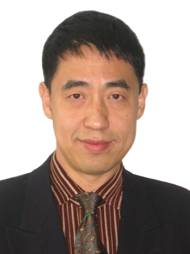|
|
|
 Professor Professor |
Name: |
Sijun Dong |
Highest Education: |
Ph.D |
Office: |
1799 Jimei Road, Xiamen |
Zip Code: |
361021 |
Phone: |
+86-592-6190779 |
Email: |
sjdong@iue.ac.cn |
|

|
| Education and Appointments: |
2004,9 Ph.D. in Biochemistry and Biotechnology, Tokyo University of Agriculture and Technology, Japan.
2001,3 M.Sc. in Biosystem, University of Tsukuba, Japan.
1990,7 B.Sc. in Animal Science, China Agricultural University, Beijing, China |
| Main academic contributions: |
| |
| Research Interest: |
Environmental Molecular Toxicology; Chinese Medicines and Environmental Health |
| Selected Publications: |
1. Dong S, Kiyama R. 2009. Characterization of Estrogenic Activity of Ginsenosides in MCF-7 Cells using a Customized DNA Microarray. Food Chem. 113: 672-678.
2. Dong S, Ying S, Kojima T, Shiraiwa M, Mechin MC, Chavanas S, Serre G, Simon M, Kawada A, Takahara H. 2008. Crucial Role of MZF1 and Sp1 for the transcriptional regulation of the Peptidylarginine Deiminase Type I Gene (PADI1) in Human Keratinocytes. Journal of Investigative Dermatology 128(3):549-557.
3. Dong S, Inoue A, Zhu Y, Tanji M, Kiyama R.2007. Activation of rapid signaling pathways and the subsequent transcriptional regulation for the proliferation of breast cancer MCF-7 cells by the treatment with an extract of glycyrrhiza glabra root. Food and Chemical Toxicology 45: 2470–2478.
4. Dong S, Zhang Z, Takahara H. 2007. Estrogen-enhanced PADI4 expression in MCF-7 cells mediated by ERa-promoted transfactors AP-1, NF-Y and SP1. Molecular Endocrinology 21: 1617-1629
5. Dong S, Kanno T, Yamaki A, Kojima T, Shirawa M, Kawada A, Mechin MC, Chavanas S, Serre G, Simon M, Takahara H. 2006. NF-Y and Sp1/Sp3 are involved in the transcriptional regulation of the peptidylarginine deiminase type III gene (PADI3) in human keratinocytes. Biochemical Journal 397(3):449-459
6. Dong S, Kojima T, Shiraiwa M, Mechin MC, Chavanas S, Serre G, Simon M, Kawada A, Kawada A, and Takahara H. 2005. Regulation of the expression of peptidylarginine deiminase type II gene (PADI2) in human keratinocytes involves Sp1 and Sp3 transcription factors. Journal of Investigative Dermatology 124(5):1026-1033.
|
| Supported Projects: |
Study on Molecular Mechanism of Environmental Endocrine Disruptors on Cardiovascular Disease |
|
|
|